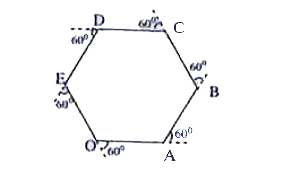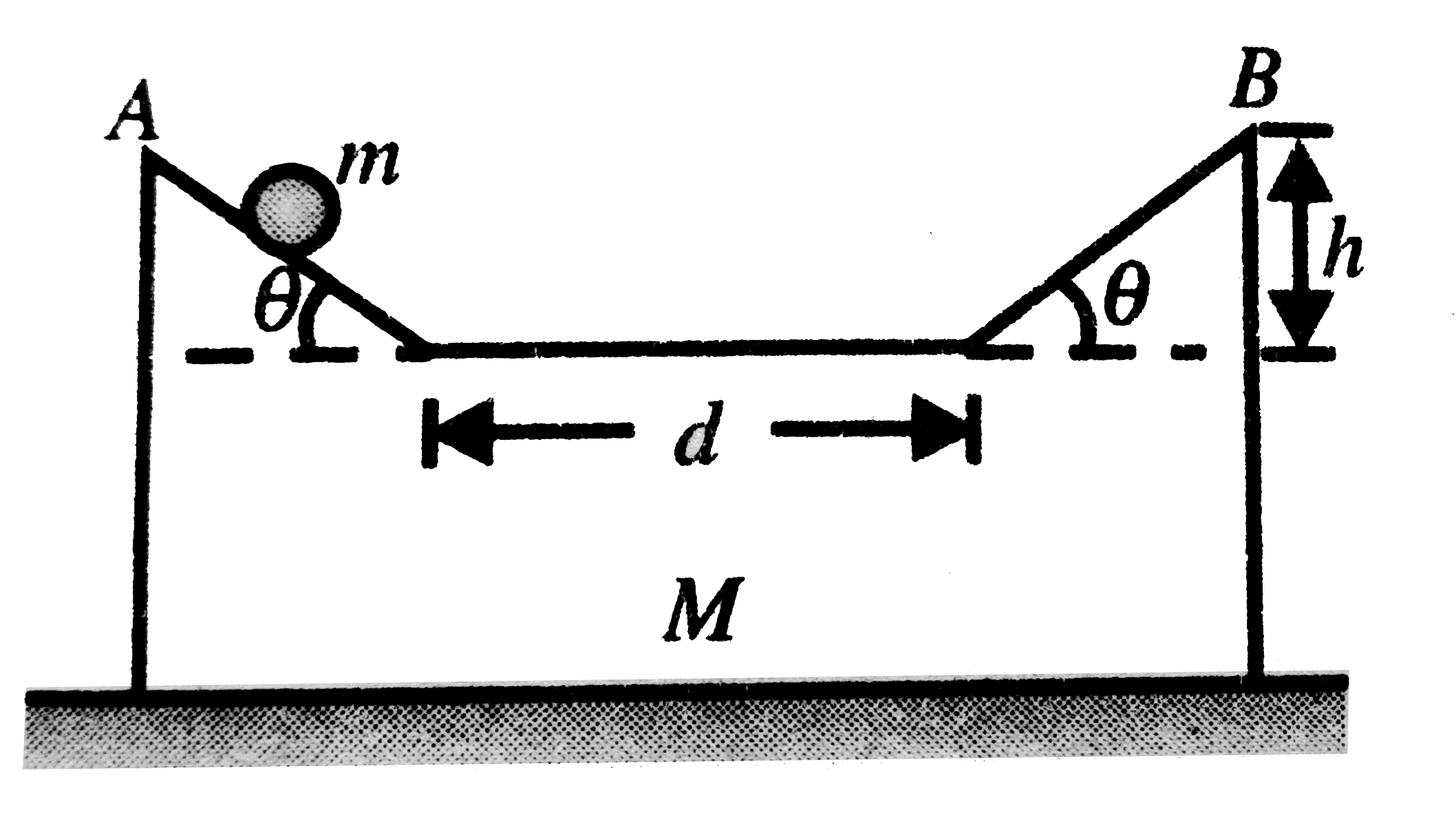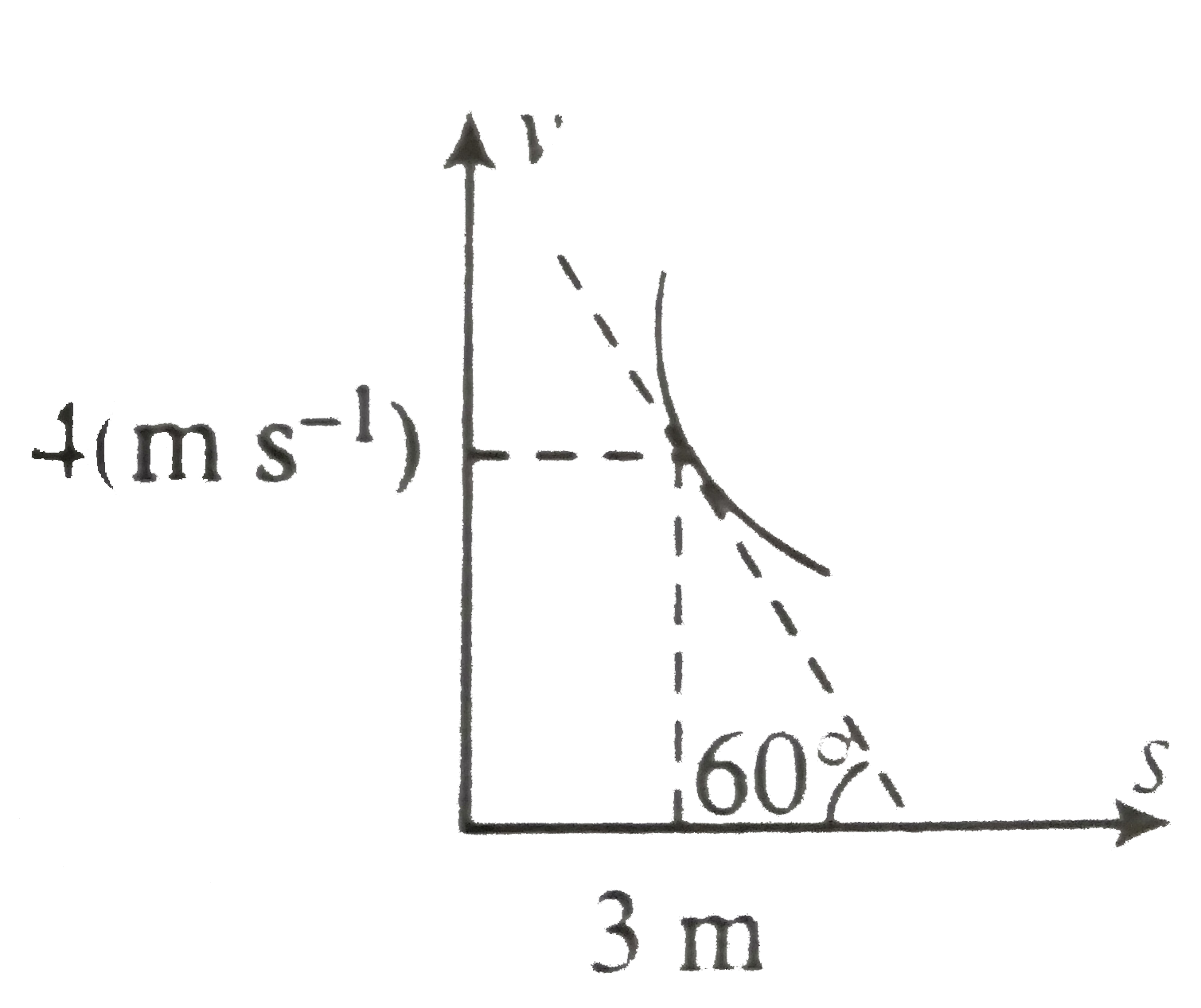A cyclist moves in such a way that he takes 72° turn towards left after travelling 200 m in straight line. What is the displacement when he takes just takes fourth turn?
Zero
600m
400 m
200 m
The correct Answer is:D
To solve the problem of finding the displacement of a cyclist who takes four 72° turns after traveling 200 m in a straight line, we can follow these steps:
1. Understanding the Movement:
The cyclist starts from an initial point and moves straight for 200 m. After this, he takes a left turn of 72°.
2. Identifying the Pattern:
Since the cyclist takes a turn of 72° after every 200 m, we can visualize this as forming a regular polygon. The total angle for a complete turn is 360°, and the cyclist is turning left by 72° each time.
3. Calculating the Number of Sides:
To find out how many sides (n) the polygon has, we use the formula:
n=360°angle of turn=360°72°=5
This means the cyclist is effectively tracing out a regular pentagon.
4. Visualizing the Turns:
After the first straight line of 200 m, the cyclist will make the following movements:
- Move 200 m straight (1st side)
- Turn left 72° and move 200 m (2nd side)
- Turn left 72° and move 200 m (3rd side)
- Turn left 72° and move 200 m (4th side)
5. Determining the Final Position:
After completing four turns, the cyclist will have moved in a path that returns him to a position that is directly opposite to his starting point in terms of displacement. The distance traveled in each segment is the same (200 m), and the final position forms a triangle with the starting position.
6. Calculating the Displacement:
In a regular pentagon, the distance from the starting point to the ending point (the displacement) can be determined. Since the cyclist has made four turns and returned to a position that is effectively the same distance away from the starting point, the displacement will be equal to the length of one side of the pentagon, which is 200 m.
Final Answer:
The displacement of the cyclist after taking four turns is 200 m.
The cyclist starts from an initial point and moves straight for 200 m. After this, he takes a left turn of 72°.
Since the cyclist takes a turn of 72° after every 200 m, we can visualize this as forming a regular polygon. The total angle for a complete turn is 360°, and the cyclist is turning left by 72° each time.
To find out how many sides (n) the polygon has, we use the formula:
n=360°angle of turn=360°72°=5
This means the cyclist is effectively tracing out a regular pentagon.
After the first straight line of 200 m, the cyclist will make the following movements:
- Move 200 m straight (1st side)
- Turn left 72° and move 200 m (2nd side)
- Turn left 72° and move 200 m (3rd side)
- Turn left 72° and move 200 m (4th side)
After completing four turns, the cyclist will have moved in a path that returns him to a position that is directly opposite to his starting point in terms of displacement. The distance traveled in each segment is the same (200 m), and the final position forms a triangle with the starting position.
In a regular pentagon, the distance from the starting point to the ending point (the displacement) can be determined. Since the cyclist has made four turns and returned to a position that is effectively the same distance away from the starting point, the displacement will be equal to the length of one side of the pentagon, which is 200 m.
The displacement of the cyclist after taking four turns is 200 m.
Topper's Solved these Questions
Similar Questions
A man moves in an open field such that after moving 10 m on a straight line , he makes a sharp turn of 60∘ to his left. The total displacement just at the start of 8th turn is equal to
View SolutionA person moving on a motor cycle in a ground takes a turn through 60∘ on his left after every 50m. Then find the magnitude of displacement suffered by him after 9th turn

View SolutionA cart is moving horizontally along a straight line with constant speed 30 m/s. A projectile is to be fired from the moving cart in such a way that it will return to the cart after the cart has moved 120m. At what speed (relative to the cart, in m/s) must the projectile be fired ? (Take g=10m/s2)
View SolutionA stone of mass 1 kg is thrown with a velocity of 20 m/s across the frozen surface of a take and it comes to rest after travelling a distance of 50 m . What is the magnitude of the force opposing the motion of the stone ?
View SolutionA farmer has to go 500 m due north, 400 m due east and 200 m due south to reach his field. If he takes 20 min to reach the field.
(a) What distance he has to walk to reach the field ?
(b) What is the displacement from his house to the field ?
(c) What is the average speed of farmer during the walk ?
(d) What is the average velocity of farmer during the walk ?
View SolutionA ball of mass m is allowed to roll down the wedge of mass M=2m as shown in the figure. What is the displacement of wedge (in m) when the ball reaches from A to B? Take θ=45∘,h=1m,d=4m

View SolutionVed travels 600 km to his home partly by train and partly by car. He takes 8 hours if he travels 120 km by train and the rest by car. He takes 20 minutes longer if he travels 200 km by train and the rest by car. Find the speed of the train and the car.
View SolutionA man travels 600 km partly by train and partly by car. If he covers 400 km by train and the rest by car, it takes him 6 hours and 30 minutes. But, if he travels 200 km by train and the rest by car, he takes half an hour longer. Find the speed of the train and that of the car.
View SolutionA person takes concentrated solution of salt, after sometime, he starts vomiting. What is the phenomenon responsible for such situation? Explain.
View SolutionA particle is moving along a straight line whose velocity - displacement graph is shown in figure. What is the acceleration when displacement is 3 m?

View Solution
